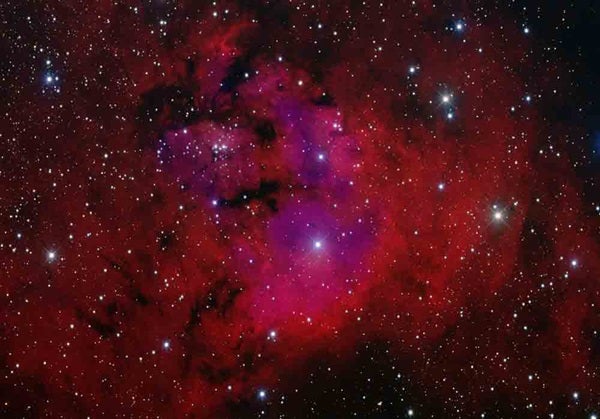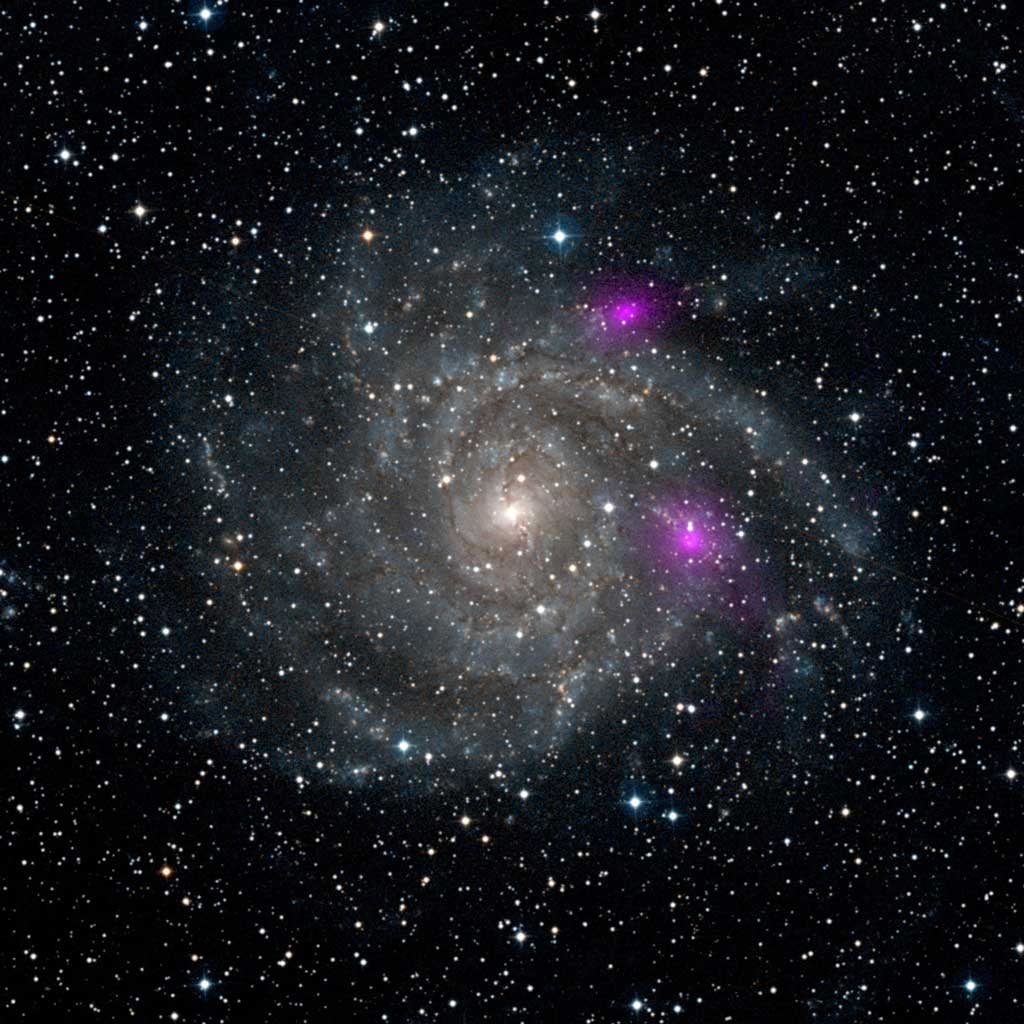In the May 2014 issue of Astronomy, I wrote the four-page story “24 gems near the North Celestial Pole.” In it, I included descriptions of various star clusters, nebulae, and galaxies you can spot year-round because their location means they never set for observers who live north of latitude 25° north. Unfortunately, we didn’t have enough room to include all of my favorite circumpolar objects. Here, then, are descriptions of eight more within five far-northern constellations. So, when you’re ready to observe the region around the North Celestial Pole, print out this article, and take it and the magazine story with you to your favorite observing site.
Fit for a King
Our next three objects lie in the constellation Cepheus the King, and the first is a pair of emission nebulae: NGC 7822 and Cederblad 214. Both are challenge objects through a 12-inch telescope. You’ll find these clouds not quite 7.5° east of magnitude 3.5 Iota (ι) Cephei. I suggest using a nebula filter like an Oxygen-III. NGC 7822 appears like a thin cloud 0.5° long and one-third as wide. Cederblad 214, just 5′ to the northeast, appears more circular and a bit brighter.
Our next target carries the catalog number GM 1–29, but observers call it Gyulbudaghian’s (gyool bu day’ gee an’s) Nebula. It bears the name of Armen Gyulbudaghian, the Russian astronomer who discovered it in 1977.
This variable reflection nebula lies 6° north of magnitude 3.4 Eta (η) Cephei. It is a wedge-shaped object illuminated by the variable star PV Cephei.
The nebula changes its brightness and shape on a non-regular basis. Use at least a 12-inch telescope at 150x to look for it. Make monthly observations, and keep good notes to record its changes.
You’ll find our last target in Cepheus a bit more than 6° east-northeast of magnitude 3.5 Iota (ι) Cephei. Look carefully. Open cluster NGC 7762 has a tendency to fade into the background when viewed with medium to high magnifications. Back off the power initially, and then increase it in steps to see several dozen 11th- and 12th-magnitude stars across this cluster’s face.
The Cub’s commodity
Our only object in Ursa Minor the Little Bear, NGC 6217, rewards large-telescope owners. This is a nearly face-on, ringed spiral galaxy.
It lies equidistant from magnitude 4.3 Zeta (ζ) and magnitude 5.0 Eta (η) Ursae Minoris, 2.5° east-northeast of Zeta and 2.6° north-northeast of Eta. Through an 8-inch telescope, you’ll see a faint oval twice as long as it is wide. That’s not the galaxy’s true shape, just the part you can spot through small instruments.
A 20-inch or larger scope begins to fill in the gaps. At magnifications above 300x, you’ll spot the bar and the beginnings of both spiral arms. The northernmost (and definitely brighter) arm curves eastward, and the southernmost one curves toward the west.
Now head to the ultra-faint constellation Camelopardalis the Giraffe for the next sky wonder. It’s spiral galaxy IC 342, which lies 3.2° due south of the magnitude 4.6 star Gamma (γ) Camelopardalis.
Visually, IC 342 appears 20′ across, but even as bright as it is, it’s not easy to see because its surface brightness is low. Look for a bright central knot about 30″ across in a rich star field. Surrounding this is a fainter halo 2′ across, while an extremely faint, knotty structure extends over a diameter of 20′.
Bear with me
Ursa Major the Great Bear contains myriad deep-sky objects, but I’ve chosen two to highlight here. First is spiral galaxy NGC 2976, which lies 1.4° south-southwest of M81 (featured in the magazine) and 2.2° south-southeast of the magnitude 4.5 star 24 Ursae Majoris. Through an 8-inch scope, the galaxy’s oval shape stretches twice as long as it is wide in a northwest-to-southeast orientation. Larger instruments show a mottled appearance with many tiny dark regions in the galaxy’s disk.
Our other object in Ursa Major is IC 2574, also known as Coddington’s Nebula. And although its popular name includes the word nebula, it is, indeed, a galaxy.
IC 2574 lies 5.7° west of magnitude 3.8 Lambda (λ) Draconis. Through an 8-inch telescope at 75x, it appears twice as long as it is wide oriented northeast to southwest. Because it’s so huge, most of this galaxy has a low surface brightness. The central region glows a bit brighter but seems offset to the southwest. In fact, most of the galaxy lies northeast of the wide core. Using a 12-inch or larger telescope, insert an eyepiece that magnifies 250x and a nebula filter, and view the star-forming region at the galaxy’s northeastern tip.
The Dragon’s delights
I still have one more object to describe, and it just so happens to lie in Draco the Dragon. You’ll find spiral galaxy NGC 3735 only 1.3° north-northeast of magnitude 3.8 Lambda Draconis. From our perspective, the spiral tilts 13° from edge-on, making it quite attractive.
Through a 10-inch telescope, the galaxy appears four times as long as it is wide. At high magnifications, NGC 3735 reveals a bright core that runs roughly two-thirds the galaxy’s length.











